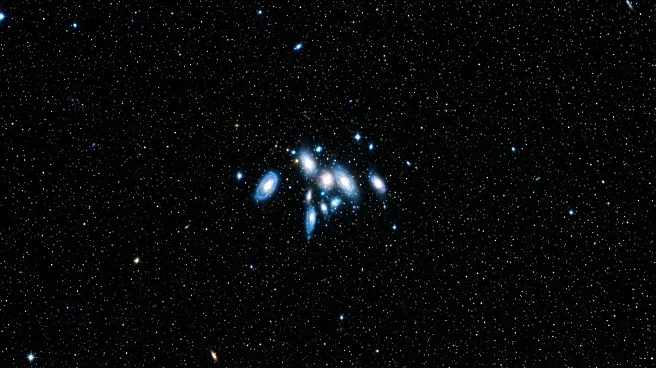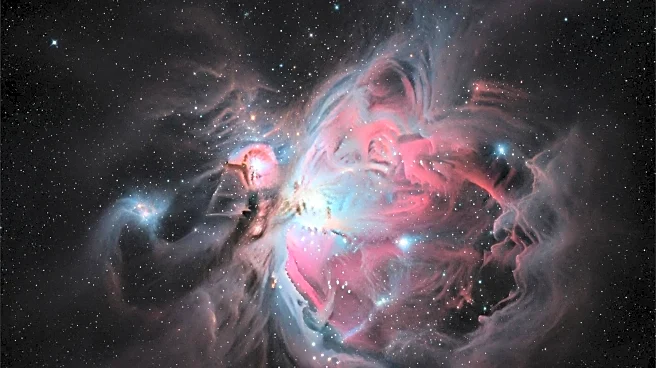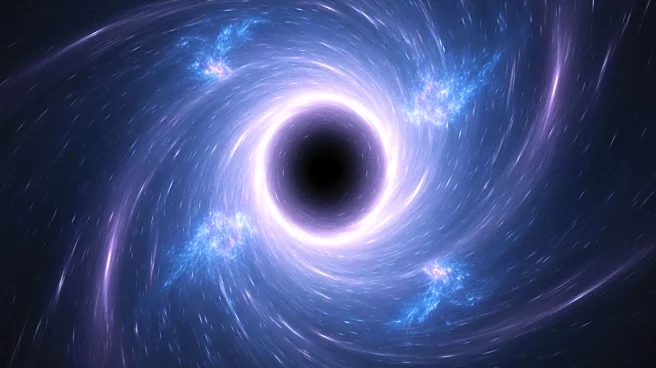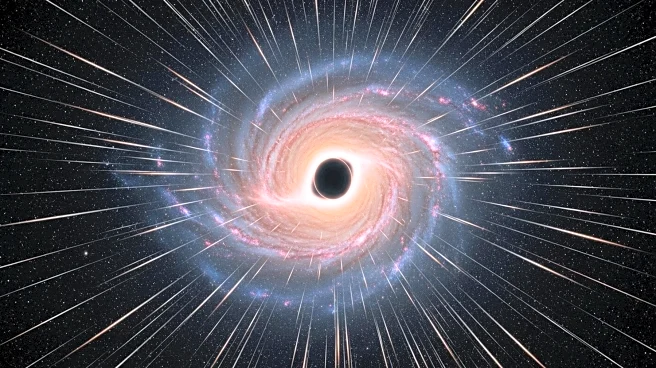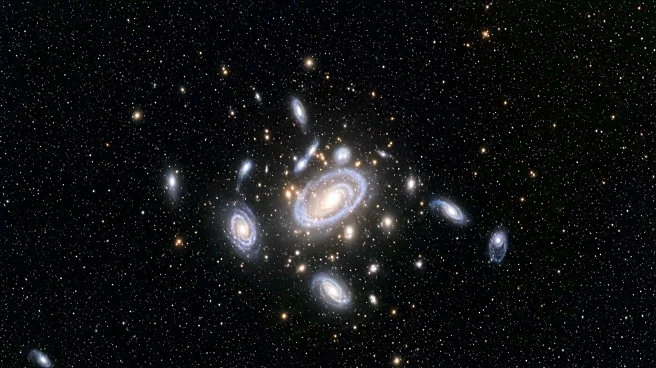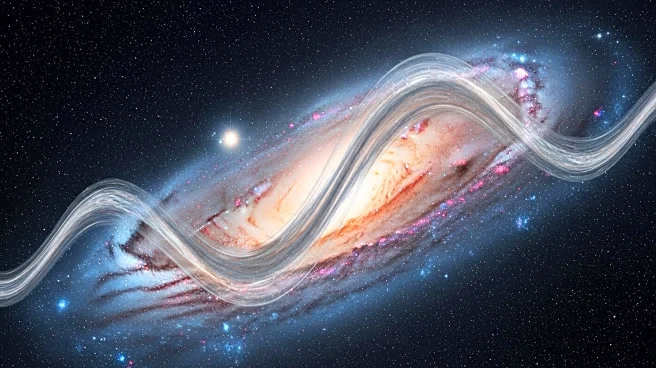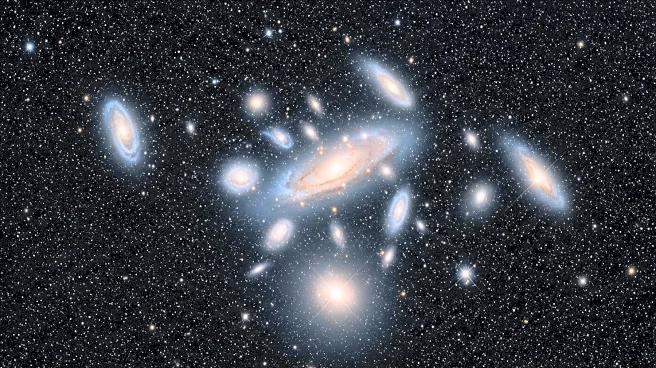What is the story about?
What's Happening?
Recent research has revealed that galaxies eject baryonic matter more violently than previously thought, suggesting that supermassive black holes play a significant role in this process. The study, led by Boryana Hadzhiyska at the University of California, Berkeley, utilized data showing how baryonic matter interacts with the cosmic microwave background and gravitational fields. This analysis indicates that baryonic matter is more spread out than dark matter, implying that supermassive black holes eject it in an unexpectedly violent manner. The findings provide a new perspective on the distribution of matter in the universe and the role of black holes in shaping it.
Why It's Important?
Understanding the violent ejection of baryonic matter by supermassive black holes is crucial for resolving ongoing disputes about the universe's clumpiness, which involves the interaction between ordinary matter and dark matter. This research offers a complementary probe to study how supermassive black holes move gas around galaxies, potentially impacting theories about cosmic structure and evolution. The insights gained could lead to more accurate models of galaxy formation and behavior, influencing both theoretical and observational astrophysics.
What's Next?
Researchers plan to incorporate additional observations, such as cosmic radio wave interactions with baryonic gas, to refine their analysis. This could lead to a more comprehensive 'baryon census' with fewer uncertainties, enhancing our understanding of matter distribution across the universe. The study aims to uncover potential deviations in dark matter behavior, which could challenge existing cosmological models and prompt new theories.
Beyond the Headlines
The study highlights the potential for supermassive black holes to generate ultra-high-energy cosmic rays, although the exact mechanism remains unproven. This aspect of the research could have implications for understanding cosmic ray origins and their impact on space environments.
AI Generated Content
Do you find this article useful?


